Gladiator Beasts - Welcome to the Thunderdome
- George Mares
- Jul 5, 2021
- 7 min read
Updated: Aug 30, 2021
Hey guys it's David here today with a Yu-Gi-Oh deck breakdown on one of my all time favorite archetypes, Gladiator Beasts. Back in 2007 with the release of Gladiator’s Assault, the Gladiator Beasts hit the floor running quickly establishing themselves as a powerful toolbox deck. Most Main Deck Gladiator’s have the ability to shuffle themselves into the deck to special summon another Gladiator Beast from the deck, if they entered combat and lived to tell the tale. When a Gladiator Beast is summoned by the effect of another Gladiator Beast monster, it gets an effect, often to destroy something your opponent controls or to search another piece from the deck to get to their powerful fusions. The Gladiators were one of the first archetypes to fusion summon without requiring a Polymerization spell, an effect called contact fusion summoning that shuffles two monsters on the field into the deck to summon the fusion monster. As we look at the modern gameplay of Yu-Gi-Oh however, this toolbox strategy is too slow to keep up with the speed of today’s decks. However, at the end of 2019 with the release of Chaos Impact, we got some glorious new Gladiator Beast support cards that can propel us into at least a rogue tier strategy in the modern metagame.
These are the only Gladiator Beast monsters that I recommend bringing into the modern era. Let's go through each card. Andal is what makes the deck tick. An in theme, searchable normal monster that makes the Link monster and extends into all of our plays is the best card most decks can ask for. If we can get to even one Andal, we can often get to our full combo plays, though two is a guaranteed combo. I’ll go into the specific combo lines in a later section but for now just know that Andal is often our best Gladiator Beast, and he doesn’t even do anything. Any player from the late 2000’s will know about Bestiari’s strengths and he is still relevant today. Bestiari’s ability to destroy backrow can clear the way for our actually powerful plays and Bestiari is required in the fusion summoned of the all important Gyzarus. Equeste is the best extender in the deck, any hand that can get to Test Panther, the link that starts our plays, and has Equeste in it can end in upwards of 5 negates. Murmillo can be any Gladiator Beast that tickles your fancy the most. Some players play Gladiator Beast Darius, an in-theme monster reborn, but I find that you often value the monster destruction effect of Murmillo over the monster reborn. But these are old news, let’s look at the new Gladiator Beast monsters and how they enable our end boards.
These are our new toys. Well technically Test Tiger is an old toy, but he’s in here because he’s almost always going to find our new toys. Attorix can turn itself into any Gladiator Beast in our Main or Extra Deck, in name and level only. This is incredibly useful because we need high level Gladiators and specific names to make our more powerful fusions. Vespasius has a summon effect, but it’s not useful. Vespasius is a high level Gladiator with an incredibly useful typing and name. The few restrictions that our most powerful spells have is that they need to summon a monster of a type that we don’t currently control. Vespasius is our only Sea Serpent, and Murmillo is our only Fish. These can be reliable summons when we are looking to extend into more plays and Vespasius is required to fusion summon Andabata, our best extender. Augustus is arguably the best Main Deck Gladiator Beast. Augustus is how we get to our end board, every single Gladiator Beast combo does through at least one Augustus. When Augustus is summoned you can special summon a Gladiator from your hand, this includes another Augustus which can then summon another monster from hand and get its special summoned ability. Augustus is amazing and we don’t mind seeing multiple in our hand as long as there is still one left in the deck.
Going back to Gladiator Beast Andal, here are all the ways to summon him and what to do with him. Rescue Rabbit is the deck’s best normal summon, bar none. One Rescue Rabbit turns into two Andals turns into Test Panther which starts us on our way to combo town. But Rescue Rabbit is an absolute magnet for hand traps, namely Effect Veiler and Ash Blossom which stop you cold. We play as many outs to these cards as we can, there just aren’t many out there. Unexpected Dai will often do the job that Rescue Rabbit does and doesn’t commit us to our normal summon. One Andal is all we need as long as we have any normal summonable monster in hand. Link Spider is for the weird hands where you open with two Andals or a good normal summon and Unexpected Dai . Turn one Andal into the Spider and summon the other Andal in hand, then link both into Test Panther and we’re started. Link Spider doesn’t come up often, but the games it does come up you can’t win without so we have to play it. Test Panther is what everything builds to and builds out of. Test Panther can search any Gladiator Beast card from our deck to our hand and then tag out a Gladiator Beast we have on board before going to combat. Incredibly useful going first, as the deck tries to do, as well as going second when your opponent doesn’t have something you can attack without losing a monster.
These are what the deck is all about. We want to end on as many of these fusions as possible. Often you can get to at least one of either Dominatianus, with a soft once per turn monster negate, or Heraklinos, with a spell/trap negate for each card in our hand, and we can end on more if we have extenders in hand. Tamer Editor is how we get out all of these fusions that require so many materials. Tamer Editor just requires two level 5 or higher Gladiator Beasts and he hits the board, this is where Augustus from earlier comes in big as a super easy way to make Tamer Editor. Once Tamer Editor hits the board we get our pick of any useful Gladiator fusion and his effect is only a soft once per turn, something we can and will abuse in this deck to swarm the board with massive fusions that come with multiple negates. Andabata is a one time Tamer Editor but it requires Vespasius and two other Gladiator beasts to summon. If you can summon him, do so, it’s a free extra body for our end of turn link summons. Gyzarus was a terror in his prime and is still useful now. On his special summon you can destroy any two cards on the field. This is not once per turn, this is not when he is fusion summoned, if you can summon him multiple times you can often destroy your opponent’s entire board. So, now that we are familiar with the cards we play, let’s talk combos.
First we need a way to get to Test Panther, this can be through Rescue Rabbit, Link Spider, Unexpected Dai and a normal summon or any way you can figure out to get two Gladiator Beasts on board. On Test Panther’s Summon, search Gladiator Beast Comeback and use it to bring back one of the Gladiators you used to make Test Panther. None of our Gladiators are beasts for exactly this reason, all of our cards are legal targets for Comeback with Test Panther on the field. Use Test Panther to tag out the Gladiator you just summoned. At this point you need to put together two level 5 or higher Gladiators to make Tamer Editor. Often this will be by summoning Augustus and summoning a high level Gladiator from hand, Aatorix counts in this case as it can become a high level Gladiator. If you have Equeste in hand, summon that and pick up your Gladiator Beast Comeback for use later in the turn. If you have Rejection, activate that before you use Test Panther’s ability and summon out Vespasius from the deck. If you have Vespasius summon Andabata and use its effect to summon Tamer Editor. If not, just summon Tamer Editor. At this point your next summons will be dependent on what deck your opponent is playing. Dominitarius can negate monster effects, often the most useful and the one I recommend summoning game 1 if you don’t know what your opponent is playing. Or Heraklinos if they are on a trap or spell heavy deck like Sky Strikers or Eldlich. The weakest combo will end on just this board but with just a few extenders we can take it to the next level. With Andabata, Tamer Editor, and Test Panther we can make Apollousa with 3 monster negates. If we picked up the Comeback you can link away Tamer Editor and Test Panther into Tri-Brigade Rugal the Silver Shield, use Comeback on Tamer Editor and summon either another Dominitarius or a Heraklinos. If Equeste or Bestiari is still on the board you can turn that and Test Panther into Simorgh Bird of Sovereignty ending on a few negates, and a wind Barrier Statue that is protected from battle by Dominitarius. At the end of the opponent’s turn you can use Simorgh to summon either Apex Avian, Equeste, or Bestiari from the deck depending on what’s useful at that point. No matter what you do, Tamer Editor turns into multiple negates and more than enough attack points on board to win the game when it gets back to you.
All in all, Gladiator Beasts aren’t as good as they used to be in a modern meta, but they can surely compete at a competent level. Ending on multiple negates and lots of attack power is something that lots of decks can’t just write off and your basic bread and butter combo doesn’t take many cards to actually execute so side boarding isn’t awful either. The deck is incredibly susceptible to common hand traps and that is primarily what is going to keep Gladiator Beasts from ever becoming meta relevant. Ash Blossom hits basically every single card in the deck, there is no realistic counter play to Nibiru and Dark Ruler No More shuts down everything you have going for you. Just some things to watch out for, but Gladiator Beasts has been treating me quite well at locals and I hope it can do the same for you.


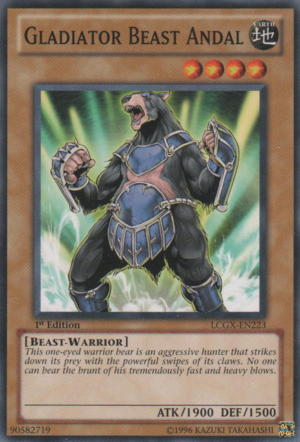

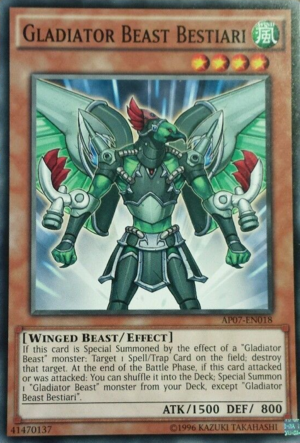



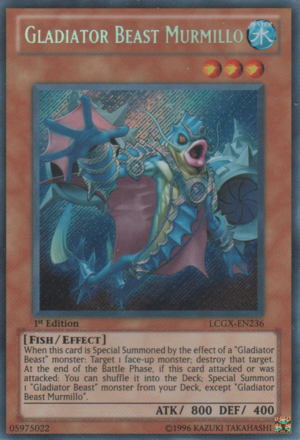

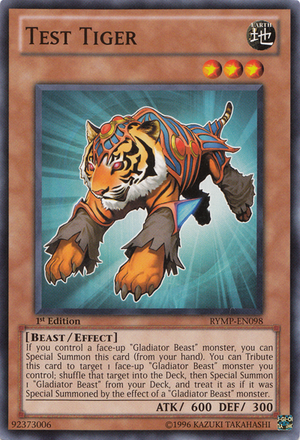

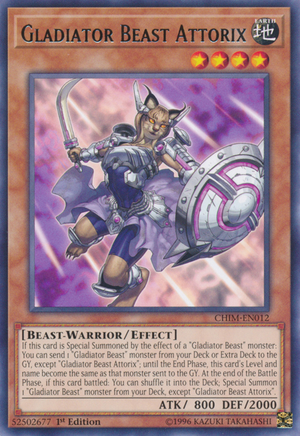

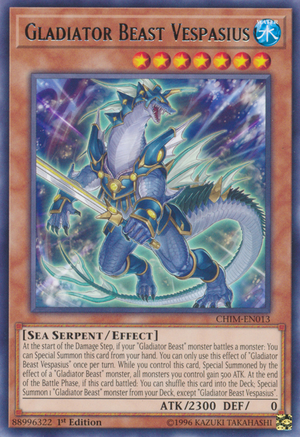

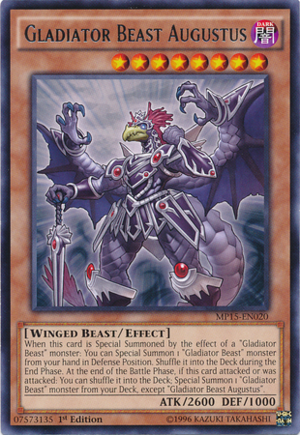



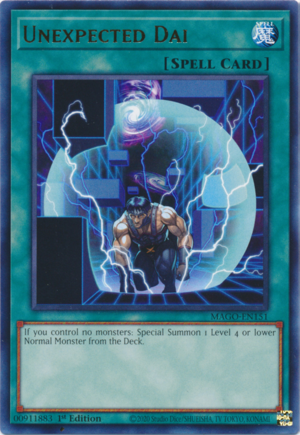

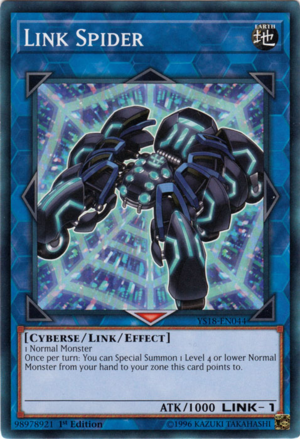

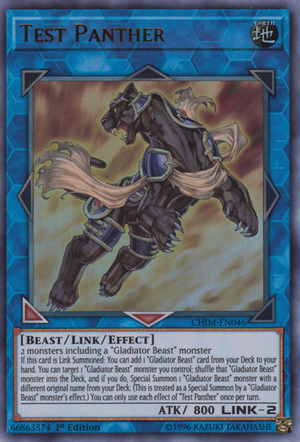











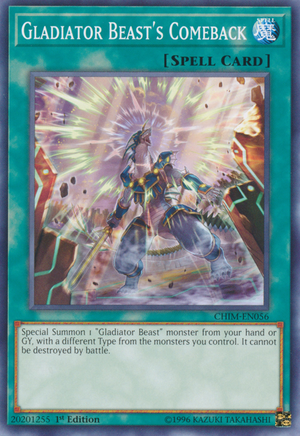

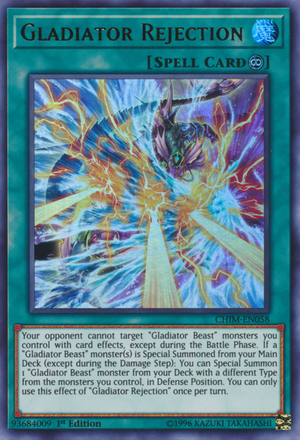



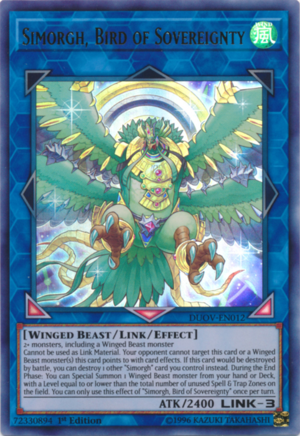

Comments